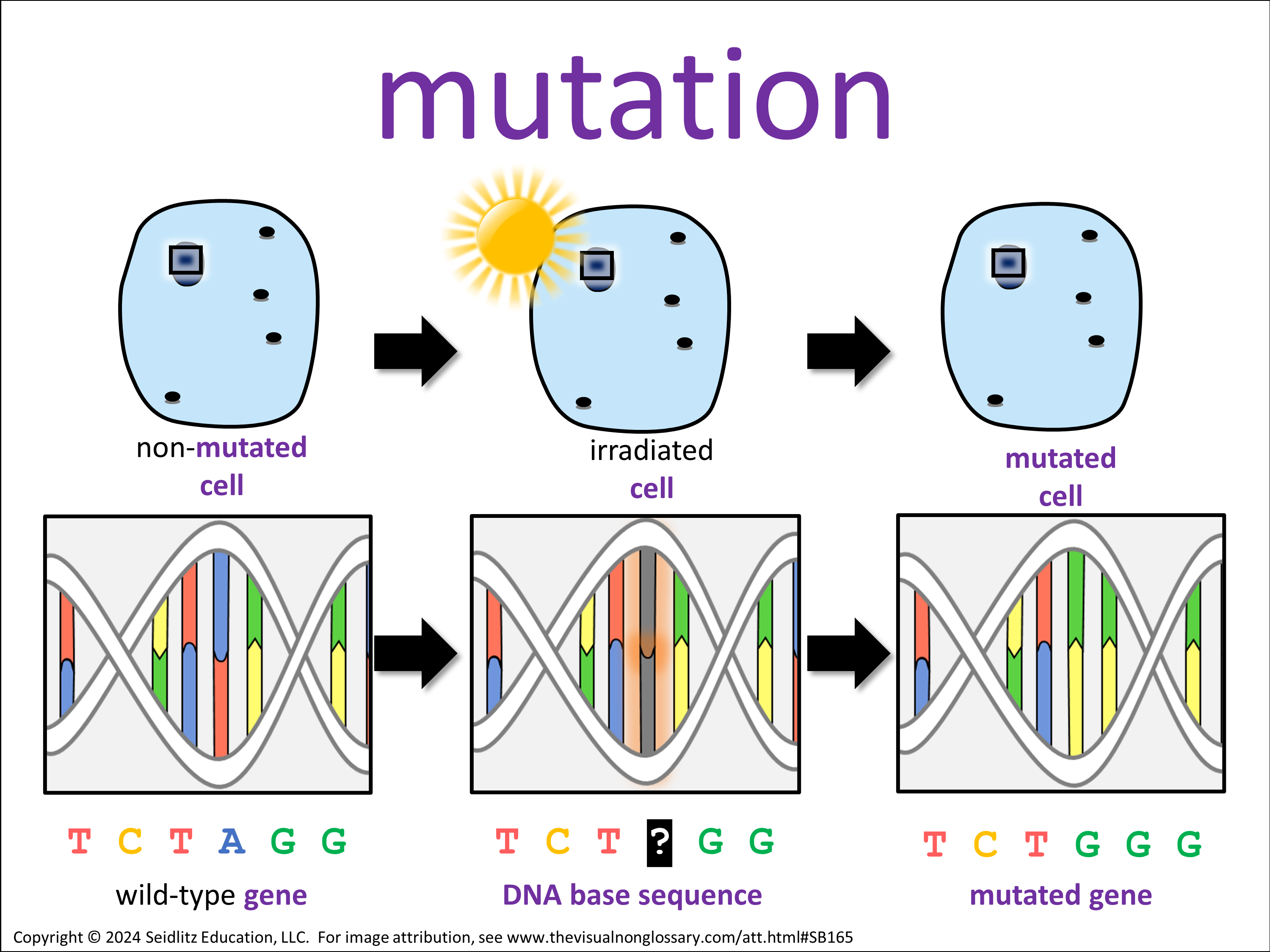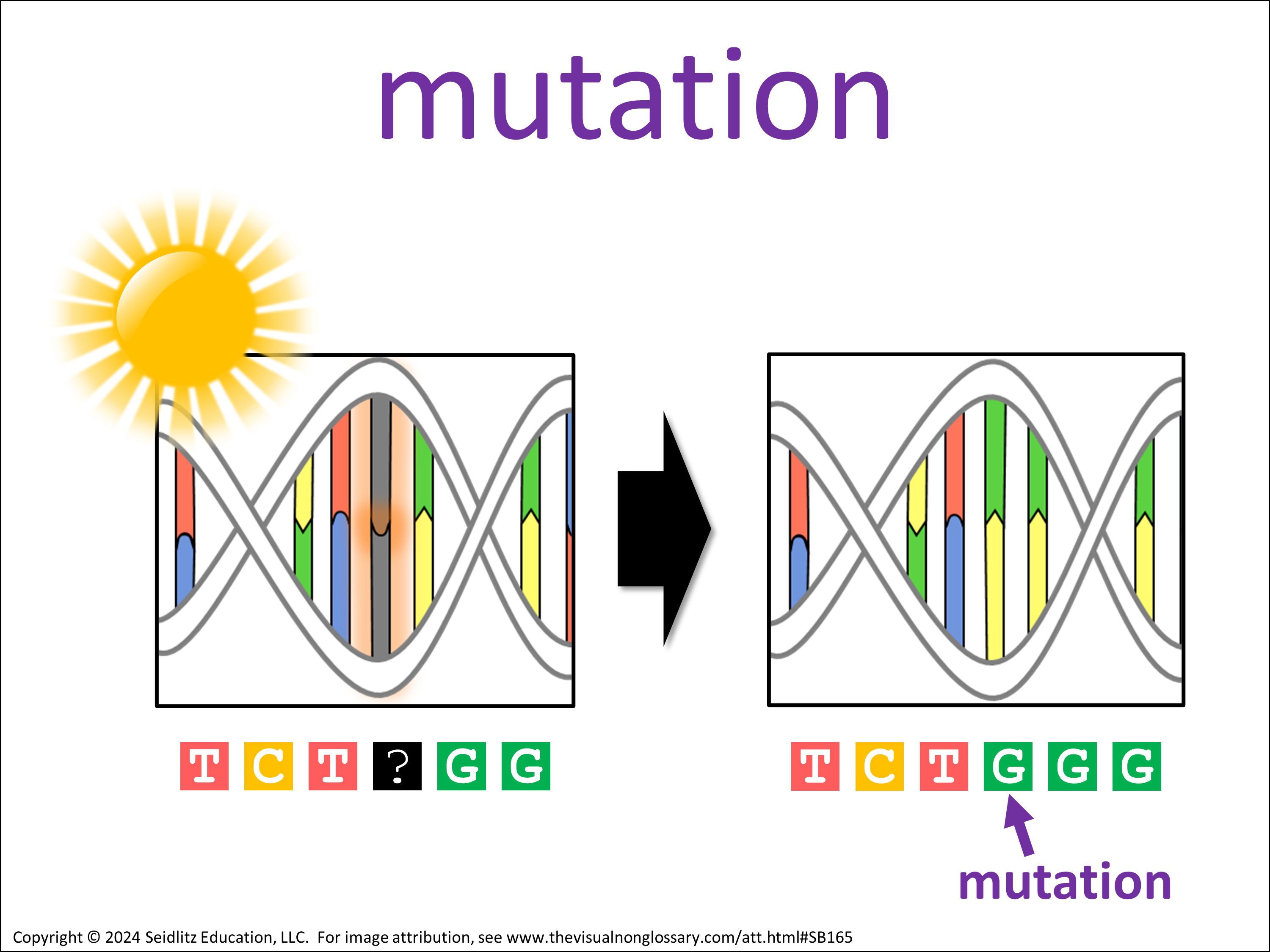mutation: Biology 🌐 Ver en Español
Life Sciences
Genetics
Vertical Alignment
TEKS:
| 7th: | 7.13(C) 7.13(D) |
| 8th: | 8.13(B) 8.13(C) |
| Bio: | B.7(C) B.10(A) B.10(B) B.10(C) B.10(D) |
NGSS:
| MS: | MS-LS3-1 MS-LS3-2 |
| Bio: | HS-LS3-2 HS-LS4-2 |
Downloads
- Visual
- Word wall visual
- Lesson Plan
- Lesson Materials
Structured Conversation Questions
Observational
What is a mutation?
A mutation is…Relational
How is a mutation related to a gene?
A mutation is related to a gene because…Inferential
What do you predict will happen when a mutated cell undergoes mitosis?
When a mutated cell undergoes mitosis, I predict…?
Please log in to comment.
Students might notice in this visual:
- The sun is in front of the irradiated cell.
- The DNA strand in the “irradiated cell” has a changed base in its sequence.
- The DNA strand in the “normal cell” has a different sequence compared to the irradiated one.
- The colors of the bases match the colors of the letters.
- The change in the DNA is highlighted in a red box, emphasizing the base that was altered.
EXTENDING THE DISCUSSION
After the observational question, randomly call on one or more students to share what they or their partner answered. Then ask the class, “Did anyone notice…?” using the suggestions above or anything else you’ve noticed.
After the observational question, randomly call on one or more students to share what they or their partner answered. Then ask the class, “Did anyone notice…?” using the suggestions above or anything else you’ve noticed.
Students might wonder:
- What causes a base to change in a DNA sequence?
- Can a small change in one base lead to a big effect on an organism?
- Are all mutations harmful?
- How does a mutation in one cell affect the whole organism?
- Can mutations be fixed or reversed?
EXTENDING THE DISCUSSION
After students have shared what they notice, ask the class, “Did anyone wonder…?” using the suggestions above or anything else you might think is interesting or relevant to the lesson.
After students have shared what they notice, ask the class, “Did anyone wonder…?” using the suggestions above or anything else you might think is interesting or relevant to the lesson.
Example student responses
To the observational question, What is a mutation?
LOW-LEVEL
A mutation occurs by a change in a DNA base.
HIGH-LEVEL
A mutation occurs by a change in the DNA sequence, as shown when a base in the irradiated cell is different from the one in the normal cell.
RESPONDING TO RESPONSES
Emphasize and celebrate each student’s use of the key vocabulary to support a culture of “no wrong answers.”
Emphasize and celebrate each student’s use of the key vocabulary to support a culture of “no wrong answers.”



